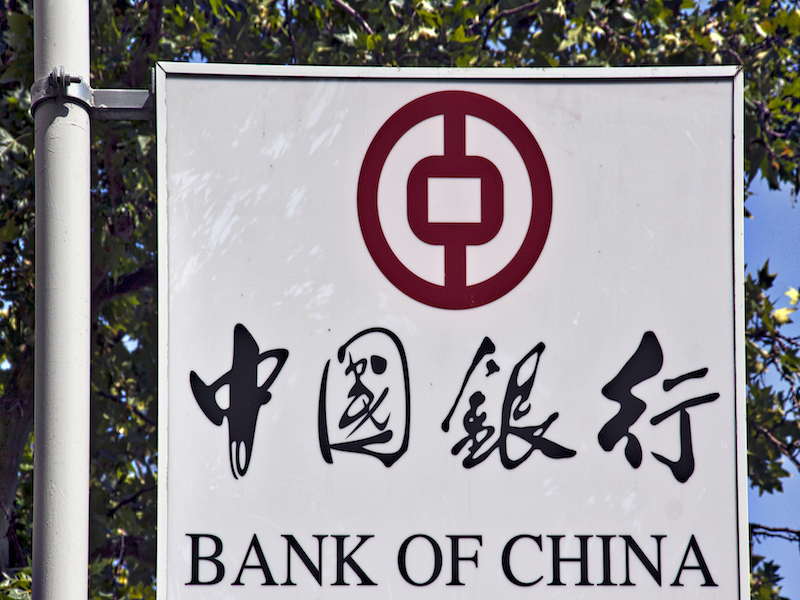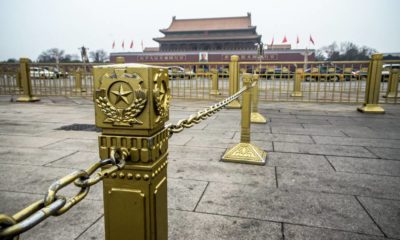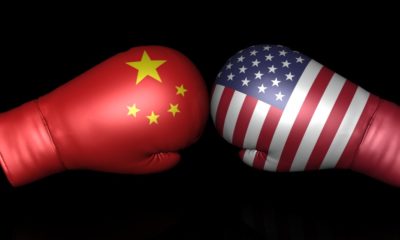bank
Is China’s Debt Higher Than We Thought?

Goldman Sachs Group Inc. has been doing its math, and it suggests an increasing discrepancy between what credit creation in China may actually be and what the Chinese TSF thinks it is.
The question is, how big is the difference and how worried should you be?
Growing Debt in China is No New Phenomenon
According to this chart from Business Insider, in the last five years China has gone up more than 50 percentage points worth of debt:

Business Insider says that having debt that’s over 200% of the GDP is not so unusual, but how fast it happened to China is concerning, especially when economic growth is not keeping up with the trend.
What is the TSF, and How Does It Relate to Debt?
The TSF, or total social financing, is a number that Chinese authorities created in 2011 to measure credit creation in China.
Until now, many have been using the figure to try and get a grip on just how much financing really is happening in China.
However, M.K. Tang of Goldman Sachs has just published a note that seriously undermines trust in the measure’s reliability.
He and others at Goldman Sachs say that the figure simply does not match the numbers turned out by their proprietary way of measuring credit and suggests that the discrepancy is part of a larger trend of China being less than forthright about the financial situation.
[ms_divider style=”normal” align=”left” width=”100%” margin_top=”30″ margin_bottom=”30″ border_size=”5″ border_color=”#f2f2f2″ icon=”” class=”” id=””][/ms_divider]
[ms_featurebox style=”4″ title_font_size=”18″ title_color=”#2b2b2b” icon_circle=”no” icon_size=”46″ title=”Recommended Link” icon=”” alignment=”left” icon_animation_type=”” icon_color=”” icon_background_color=”” icon_border_color=”” icon_border_width=”0″ flip_icon=”none” spinning_icon=”no” icon_image=”” icon_image_width=”0″ icon_image_height=”” link_url=”https://offers.thecapitalist.com/p/warrenbuffet/index” link_target=”_blank” link_text=”Click Here To Find Out What It Said…” link_color=”#4885bf” content_color=”” content_box_background_color=”” class=”” id=””]Warren Buffett Just Told His Heirs What He Wants them To Do With His Fortune When He Dies. [/ms_featurebox]
[ms_divider style=”normal” align=”left” width=”100%” margin_top=”30″ margin_bottom=”30″ border_size=”5″ border_color=”#f2f2f2″ icon=”” class=”” id=””][/ms_divider]
What Goldman Analysts are Doing to Get Their Numbers
Money in China is complicated, as are China’s ways of measuring it.
Given the TSF’s apparent inaccuracy, analysts with Goldman are taking a different route to finding the information they seek.
They look at the money flowing from households and companies into investments.
Measured this way, China created 24.6 trillion yuan—the equivalent of ($3.7 trillion) in the past year.
According to the TSF, they only created 19 trillion yuan.
It’s a huge difference and more than enough to cast doubt on the TSF as an accurate measure.
The following chart illustrates the point quite clearly:

As you can see, the dark blue line indicating Goldman Sachs’s estimate far outstrips the light blue bars of the TSF’s estimates.
So, China Almost Certainly Has an Issue with Truthfulness in its Economy
CNBC points out that it has come to light that Beijing is making every attempt to control what China and the rest of the world believe is going on with its economy, which they would like to portray as bullish.
Also, even reports that are more accurate about bearish tendencies have taken the line that numbers like the TSF are accurate.
Be it cultural differences or outright dishonesty, the Chinese have not represented themselves accurately, and their numbers are now in doubt.
Also, said numbers are almost certainly worse, rather than better than China purports.
How Much of a Problem Is This Really?
In the same report, CNBC posits that basic differences in the way China operates will prevent the kind of collapse that many fear.
The Chinese are much more collectivist in culture, and their financial system is expected to follow instructions from the top—in this case Beijing—more than it is to be profitable.
Since the top is also supposed to look out for the bottom, China is much more likely to restructure its debt in ways the United States simply wouldn’t.
On the Other Hand, Fitch Believes that China is Headed for Big Trouble
According to the Telegraph, Fitch believes that China will experience instability and stunted growth if it does not cut back on issuing credit.
Fitch analysts believe that current lending practices are making the country’s system more vulnerable.
And China is definitely not growing its GDP much right now, as demonstrated by the following graph:

The GDP has not really grown since 2010—indeed it has mostly dropped or narrowly maintained.
Goldman Also Cites Circular Lending as a Problem
China currently has a scheme going where banks lend to nonbank financial institutions instead of actual people or businesses.
It’s good for the bank’s profits but keeps the money trapped in the financial system instead of moving it out into the real world to strengthen the economy.
Clearly, Goldman has a number of concerns about China’s credit system and economy, and they are not alone in their concerns.
Goldman is Only Getting More Worried and Says So Outright
Goldman says they are more concerned than ever about China’s credit problems and sustainability, and the so-called shadow-lending that the TSF failed to measure at all makes them even more nervous.
They consider it to be poor regulation and an invisibility of possible breaking points in the system.
Conclusion
While there is a possibility of China restructuring its debt, it is starting to look more and more like it is cruising for an economic bruising.
The latest news from Goldman Sachs, while somewhat dismal, only confirms fears that people already have—that China is headed for a massive collapse due to the way it is running its economy.















